The reason why the Mona Lisa is smiling is revealed: Leonardo may have been having an inside joke, says expert after landscape behind painting subject was finally identified
The reason why the Mona Lisa is smiling is revealed: Leonardo may have had an inside joke, an expert says after the landscape behind the painting was finally identified.
Just as geology seems to have solved the mystery of the landscape in the Mona Lisa painting and identified it as Lecco on the shores of Lake Como, it now sheds new light on another secret of Leonardo’s masterpiece: her enchanting smile.
The Renaissance polymath with a complex understanding of geology may have had some fun with a geological pun, according to new research.
Greg Sereda, an amateur art historian, has made a connection between the mountainous area just north of Lecco – with its two main mountains Grigna Settenrionale and Grigna Meridone – and a local dialect word ‘grigna’ for ‘grin’.
He told MailOnline: ‘The pun ‘grigna’ could be the key to her smile.’
The mystery behind the Mona Lisa’s enigmatic smile may have finally been revealed and it could all be a joke about a local dialect word for grin
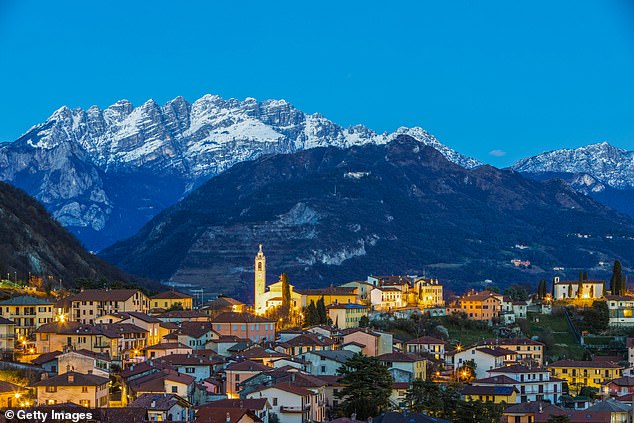
The mystery of the landscape in the Mona Lisa painting has now been solved and identified as Lecco on the shores of Lake Como (File Image)
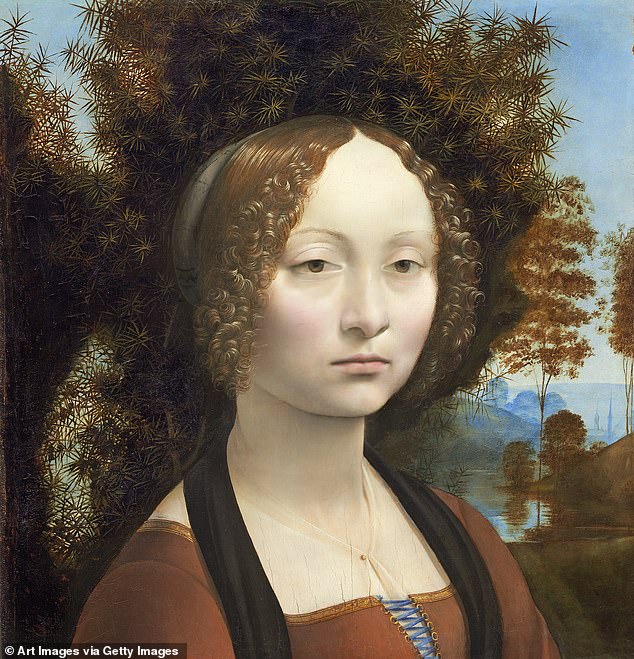
Unlike his most famous painting, Da Vinci’s Ginevra de Benci does not have a mysterious smile on her lips
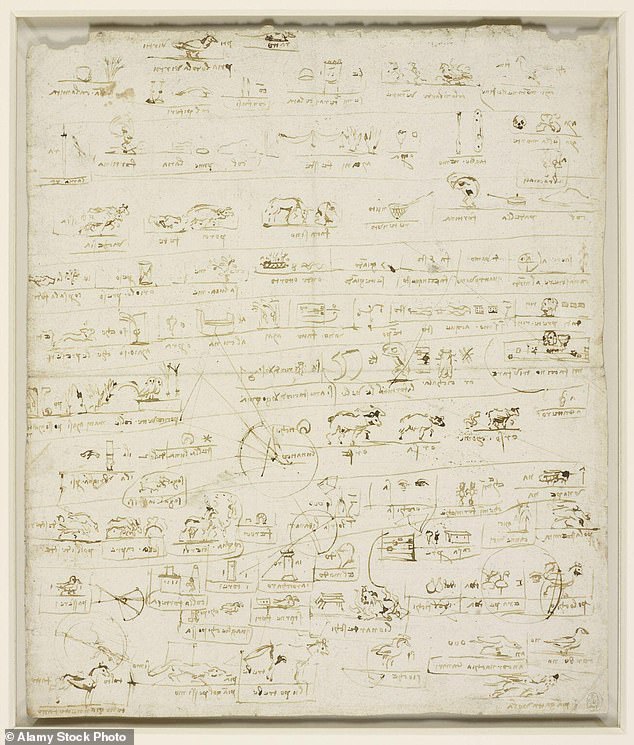
The Renaissance polymath had a keen insight into mathematics, languages, geology, science and art
Last week he had contacted Ann Pizzorusso, a geologist and Renaissance art historian, who has used her expertise in both fields to suggest that Leonardo painted several recognizable features of Lecco, in the Lombardy region of northern Italy: the 14th century Azzone Visconti Bridge. , the southwestern Alps with views of the surrounding area and Lake Garlate.
She presented her findings at a geology conference in Lecco last weekend, and when Mr. Sereda told her about his discovery, she smiled at its significance: “I got the pun immediately. Leonardo traveled extensively through this area and geology has just revealed the secret of the Mona Lisa’s smile.’
She said: ‘A little-known aspect of Leonardo’s talents was that he had a great sense of humor and composed riddles and puns.’
For example, in Leonardo’s portrait of Cecilia Gallerani, Ludovico Sforza’s young mistress holds an ermine and although the word ‘galée’ is Greek for ermine, it has been interpreted as a pun on both the subject’s name and a statement of her purity. . There are also examples of Leonardo’s pictorial puns in the Royal Collection.
Ms Pizzorusso said: ‘In his portrait of Ginevra de’ Benci in the National Gallery in Washington, Ginevra is a play on the word ‘juniper’ and he placed a juniper tree in that photo – an element of nature. . [Juniper refers to her chastity, the greatest virtue of a Renaissance woman] So if he put a tree in it, he could put a mountain in it.”
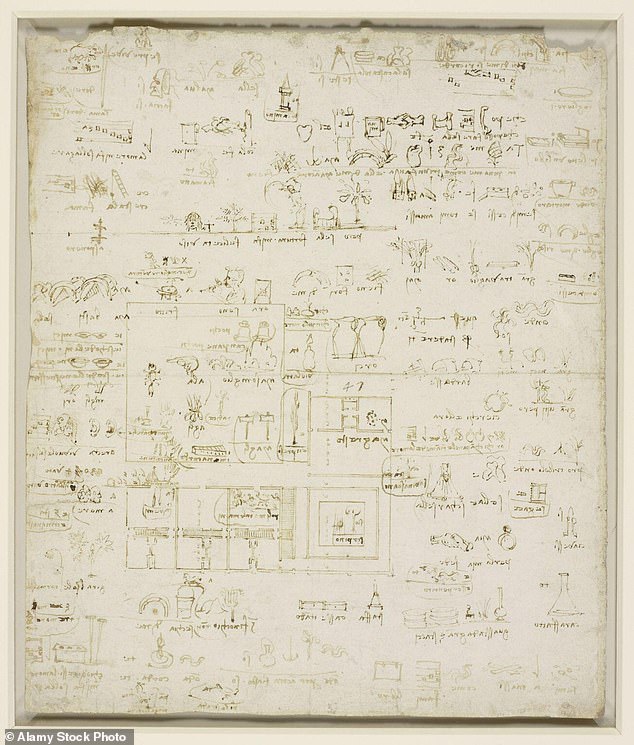
A page with his sketches including an architectural plan with notes
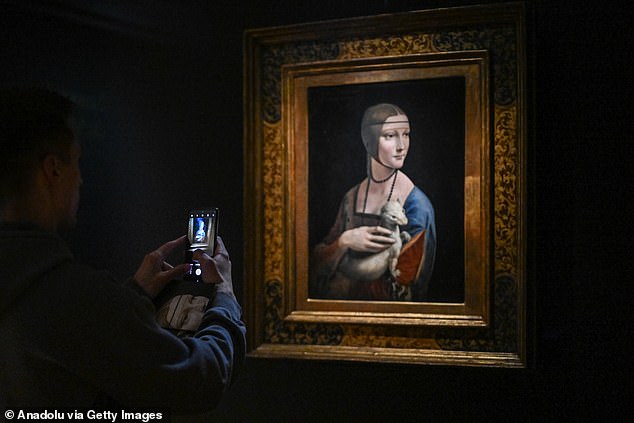
Da Vinci’s Lady with an Ermine, another of the famous Renaissance artist’s mysterious portraits
She added: ‘Because it is in the Lombard dialect, only locals know this word ‘grigna’. It makes our case more mysterious, stronger and fully verifiable when we connect it to the mountain and its smile.”
Jacques Franck, a former Leonardo advisor at the Louvre in Paris – where the painting hangs – described the theory as ‘very interesting’: ‘Yet I think that Leonardo probably first symbolized Lisa’s name Giocondo – which means happy in Italian – by representing her smile. Of course, an additional reference to her ‘grin’ with a connection to Mount La Grigna cannot be ruled out.’
Michael Daley, director of watchdog ArtWatch UK, said: ‘I see that a link can be made between the enigmatic smile and the landscape after Ann Pizzorusso’s animistic exhibition of the rocks. Leonardo had created in one work a pictorial simulacrum of the universe… We can zoom in on the smallest, subtlest details of the figure and at the same time understand its place within the all-encompassing fertility and completeness of the changing landscape, which extends to a cosmic infinity that one, yet it retains clarity.’
Mr. Sereda has been researching Leonardo in his spare time as a nurse in Ontario, Canada. He had become ‘completely fascinated’ by the similarities of the Mona Lisa with the landscape of Lecco and had researched possible hidden meanings, which led him to the pun ‘grigna’.
But having failed to interest some art historians in his findings, he is now all the more enthusiastic about Ms Pizzorusso’s response.
Since unveiling her geological findings last week, she has been inundated with emails and phone calls from ordinary people who have long wondered whether Lecco was the location of the Mona Lisa but have been unable to prove it. But she has now used geology to confirm this, revealing that the rocks in Lecco are limestone and that Leonardo has accurately depicted his in a gray-white color: ‘I coordinate all the rock formations and I say that this all matches. ‘
She added: ‘You wouldn’t believe how many emails I get from people all over the world analyzing the painting from different perspectives. Although this is a hobby for them – they are specialists in their field, literature, linguistics, knowledge of the area – they approach the image by focusing on certain aspects and commenting on them accurately. Leonardo was so multidisciplinary. Now the common man has his say and everything comes together.’
